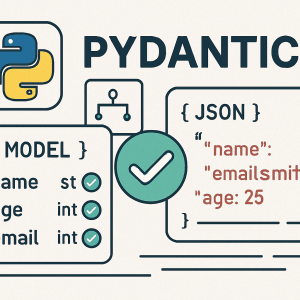Flask, a lightweight and flexible web framework for Python, makes it easy to build web applications and APIs. For more detailed information about Flask, visit the official Flask documentation. Whether you’re processing form data, extracting query parameters, or handling JSON payloads, Flask provides a robust set of tools for managing HTTP requests.In this blog post, we will explore four essential request methods in Flask: request.get_json(), request.form, request.args, and request.url. By understanding these methods, you’ll be able to handle incoming data effectively, whether you’re building APIs, handling user inputs, or working with dynamic URLs.
1. request.get_json(): Extracting JSON Data from Requests
When working with RESTful APIs or handling client-server interactions in modern web apps, JSON is one of the most common data formats. Flask’s request.get_json() method simplifies the process of extracting JSON data from the body of POST requests where the Content-Type is application/json.
Why Use request.get_json()?
- Ideal for APIs that exchange data in JSON format.
- Simplifies JSON parsing in Flask applications.
In below example, the JSON data is parsed automatically, making it easy to extract values like name and age from the request body.
@app.route('/json-example', methods=['POST'])
def json_example():
data = request.get_json()
if data:
name = data.get('name')
age = data.get('age')
return f'Hello, {name}! You are {age} years old.'
else:
return 'Invalid JSON data received.', 400
2. request.form: Handling Form Data in Flask Applications
When users submit forms on your website, Flask handles form data with request.form. This method parses form data from POST requests where the Content-Type is application/x-www-form-urlencoded or multipart/form-data.
Why Use request.form?
- Perfect for traditional HTML forms (e.g., login forms, user input forms).
- Automatically handles file uploads if
multipart/form-datais used.
@app.route('/form-example', methods=['POST'])
def form_example():
name = request.form.get('name')
age = request.form.get('age')
return f'Hello, {name}! You are {age} years old.'
3. request.args: Extracting Query Parameters from URLs
In GET requests, Flask makes it easy to extract query parameters using request.args. Query parameters are part of the URL and are often used for filtering or pagination (e.g., /items?category=books&page=2).
Why Use request.args?
- Useful for URL query parameters that convey small pieces of data.
- Ideal for filtering, sorting, or paginating data on your site.
In below example, query parameters like name and age are extracted from the URL using request.args.
@app.route('/query-example')
def query_example():
name = request.args.get('name')
age = request.args.get('age')
return f'Hello, {name}! You are {age} years old.'
4. request.url: Retrieving the Complete URL of the Request
Sometimes, you need to access the full URL of the current request, whether for logging, debugging, or redirecting users. Flask’s request.url provides the complete URL, including the scheme (http or https), host, path, and query parameters.
Why Use request.url?
- Useful for logging request details.
- Helps generate dynamic redirects based on the current URL.
@app.route('/get-url')
def get_url():
url = request.url
return f'The URL of this request is: {url}'
Conclusion: Mastering Request Handling in Flask
Flask provides powerful tools for handling HTTP requests efficiently. Whether you’re building RESTful APIs or handling simple web forms, understanding request.get_json(), request.form, request.args, and request.url is essential for managing data in your Flask applications.
Incorporating these request handling techniques into your Flask applications will ensure that your web apps are dynamic, responsive, and capable of handling a variety of user inputs.If you’re new to Flask, be sure to check out our Build First Flask Application For Beginners, where we cover the basics of building your first Flask app from scratch



